It looks like you're using an Ad Blocker.
Please white-list or disable AboveTopSecret.com in your ad-blocking tool.
Thank you.
Some features of ATS will be disabled while you continue to use an ad-blocker.
5
share:
2007 Martian Life Reports - Official Argentina Investigation
I had this info from about some months, never tried to dig into it. Last days i did, and i think that the results are interesting. Maybe you know about this, based on the Levin investigations, but i wanted to share the argentinean investigation as well. I know that the articles are somehow long, but i think they worth it. Beyond economical, budget and political issues, i can say that the few science minds here are of great level. Those issues make the sciencee professionals to migrate to other countries for work in most cases.
Wait to see your comments and sorry for my english.
Here are the official argentinean documents (note that electroneubio.secyt.gov.ar... is the page of t he Electroneurobiological Investigation Laboratory (Laboratorio de Investigaciones Electroneurobiológicas - Hospital Neuropsiquiátrico "Dr. José Tiburcio Borda" (Neuropsiquiatric Hospital Dr. José Tiburcio Borda)- - Goverment of Buenos Aires City - Argentina (obviously, .gov.ar is oficcial 100%).
electroneubio.secyt.gov.ar...
electroneubio.secyt.gov.ar...
Por Mario Crocco - Director, Centro de Investigaciones Neurobiológicas, Ministerio de Salud, República Argentina, y Jefe de, Laboratorio de Investigaciones Electroneurobiológicas, Hospital "Dr. J. T. Borda", Gobierno de la Ciudad de Buenos Aires Electroneurobiología 2007; 15 (2), pp. 1-34; electroneubio.secyt.gov.ar...
Publication date / fecha de publicación: 14 de abril, 2007
(By Mario Crocco - Director, Center of Neurobiological Investigations, Ministry of Health, Argentinean Republic, and Chief of the Neurobiological Investigation Laboratory, Hospital "Dr. J. T. Borda" - Goverment of Buenos Aires City).
Copyright © April 2007 Electroneurobiología. Este texto es un artículo de acceso público; su copia exacta y redistribución por cualquier medio están permitidas bajo la condición de conservar esta noticia y la referencia completa a su publicación incluyendo la URL (ver arriba). / This is an Open Access article: verbatim copying and redistribution of this article are permitted in all media for any purpose, provided this notice is preserved along with the article's full citation and URL (above).
HTTP Version:
electroneubio.secyt.gov.ar...
PDF Version:
electroneubio.secyt.gov.ar...
contactincontext.org...
(Contact In Context is a peer-reviewed, web-based, academic journal. Since 2002 the journal has served as a scientific forum for research in astrobiology and the search for intelligent life in the universe. Within these areas, Contact In Context covers topics such as astroanalytical chemistry, microwave spectrometry, optical spectrometry, electrical engineering, physics, biology, social sciences, mathematics and statistics. Articles differ in scope and
focus, but are intended for researchers in SETI and astrobiology, resource professionals, and scientists in general. Contact In Context encourages submissions of research articles, research reviews, scholarly essays, and book reviews on all topics related to SETI, astrobiology, and astroanalytical chemistry. The journal is published semiannually by the SETI League and is distributed without charge through the World Wide Web).
"The Viking lander mission’s series of assays known collectively as the Labeled Release experiment (LR) continues to give rise to controversy, Mario Crocco, Director of the Neurobiology Research Centre at Ministry of Health in the Argentine Republic reports. Crocco has developed a taxonomical entry for the active agent on Mars, which he calls Gillevinia straata (named for the LR experimenters Gilbert Levin and Patricia Straat), and that is characterized by its behavior based on the reports from Viking’s LR experiment. Crocco’s published paper on the classification attaches a name to the putative Martian life using taxonomic conventions. In current taxonomy, the organism’s DNA
plays a large part in identification and naming, but Crocco does not have DNA evidence of the organism. The organism has never been isolated and therefore is a rare specimen to go through the taxonomic process." Mario Crocco reports his developments, including a thorough examination of the LR’s experimental design, and results in the April 2007 issue of Electroneurobiología."
[edit on 8-12-2007 by Orion437]
Argentine scientists determine that there is Mars life
www.nowpublic.com... (note the traslation posted at the botton, by one of the readers of the article).
@DIN, 1/6/07 - Argentine scientists of the hospital Hut, employee of the GCBA, determined that there is Mars life. They did it after a new interpretation, emanated data of the carried out experiments by the spaceship Viking in 1976. This way, they corrected the reading conducted by the scientists of the NASA, who with he himself material had defined the nonexistence of life in the red planet.
"Being based on such studies, the NASA had concluded in 1976 that was impossible the existence of life in the red planet. Due to that erroneous interpretation, the NASA continued sending its apparatuses without sterilizing. Now which the presence is known life, it is possible that the soundings that descended in Mars they introduced terrestrial microorganisms; that contamination could affect the native life. The NASA not only said that there was no Mars life, but that the planet could not support life since this one would be annihilated by the ultra-violet rayses of the Sun that cross the Martian atmosphere and cosmic rays of diverse origin, that is to say, that, Mars car becomes sterile. This way, from 1976 the NASA sent to Mars its apparatuses without sterilizing. Now which the presence of life in the planet was demonstrated, it is demonstrated that the soundings that descended in Mars they introduced terrestrial microorganisms. The possibility that fits that contamination affects the native life. This way, the NASA has a great responsibility in this problem and drags in that to THAT (European Agency Space) that followed its passages without hesitations. “In addition”, Pablo Della Paolera comments the Buenosairean scientist “cannot occur the luxury of to have spent million dollars of the contributors in missions to Mars, so that those are the Argentineans that process the received data well and are they them discoverers of the Mars life… According to the Lic. Della Paolera this forces the NASA “to change its plans, to sterilize the next missions (what it has stop cost) and to put detectors of active life (not of molecules), that from 1976 were not used more by to have supposed hastily that there was no Mars life”. “This”, also comments Della Paolera “puts in risk contracts with private companies that construct instruments so that NASA sends them in its missions, the next ones even glided for the 2008 and the 2020”.
Viking Biological Experiments
en.wikipedia.org...
"By the end of 2006, Mario Crocco, neurobiologist at the Neuropsychiatric Hospital Borda (Buenos Aires, Argentina), had re-evaluated the data collected by that mission, adding data from recent investigations. The article was published in Electroneurobiología, a State journal that devotes a section to basic concepts in theoretical biology. They postulate that the results are consistent with the presence of microbial life in the surface of the planet, and have proposed the name Gillevinia straata.[5] as characterized by the observed activity, inasmuch as the new data, together with concepts discussed in the author's tradition regarding what life is, allow to consider such activity as metabolic."
Gillevinia Straata
en.wikipedia.org...
"On these data, which had accumulated very recently, and the concept of life held in their scientific tradition, they concluded that the results are consistent with the presence of microbial life in the surface of the planet, and have proposed the name Gillevinia straata.[1] to honor the responsibles of the Viking experiment that yielded positive results. Biological nomenclature is an important step forward in a case for life. Formally, it changes the charge of proof: anyone wishing to oppose to it now should publish a discussion showing that Gillevinia straata is in fact an abiotic source of the 1976 observations."
[edit on 8-12-2007 by Orion437]
Excellent post, and a good find, showing a divergent viewpoint.
But, what we are left with is to "scientific camps" with opposing views on exactly what the term "life" should include. The one cited here asserts that since the have named this "lifeform", it is now up to NASA to prove it wrong. Thats much like finding a very tall hill and naming it Mount XXX, and then telling the rest of the world to prove it isn't really a mountain.
While there appears to be valid points on both sides here, this comes across as more of a turf war over who gets to decide the issue of what life is. The paper also leaves a way out by hinting that the lack of proper procedures for contamination could be to blame.
Nevertheless, this does raise some serious considerations, not only for the method of defining "life", but how future precautions against cross contamination by space probes should be viewed.
A very good thread. Worthy of a flag, a star, and the applause button. I look forward to a worthy discussion on this.
But, what we are left with is to "scientific camps" with opposing views on exactly what the term "life" should include. The one cited here asserts that since the have named this "lifeform", it is now up to NASA to prove it wrong. Thats much like finding a very tall hill and naming it Mount XXX, and then telling the rest of the world to prove it isn't really a mountain.
While there appears to be valid points on both sides here, this comes across as more of a turf war over who gets to decide the issue of what life is. The paper also leaves a way out by hinting that the lack of proper procedures for contamination could be to blame.
Nevertheless, this does raise some serious considerations, not only for the method of defining "life", but how future precautions against cross contamination by space probes should be viewed.
A very good thread. Worthy of a flag, a star, and the applause button. I look forward to a worthy discussion on this.
Cool thread, great concept, right off the bat reminded me of AHL84001 which was found in Antarctica and the basis for most of the 2000 cover story in
National Geographic. Here's a thread about it:
www.abovetopsecret.com...
www.abovetopsecret.com...
Thanks a lot NGC2736 ! I was thinking the same thing, this kind of "battle" of who is right and whos isn´t. Levin makes some very interesting
points in his original statements, and i know that several members of the sciencie community are against him, to say it some way.
Thanks anhinga, AHL84001 was a total shock at that time.
I wonder how far these investigations are going, maybe it could be useful to contact someone here.
Thanks anhinga, AHL84001 was a total shock at that time.
I wonder how far these investigations are going, maybe it could be useful to contact someone here.
So where do we decide to draw the line for life? Is it confined to what we have here on earth as an example? Is it anything that can propogate? just
what does it take to be alive?
Interesting questions.
Interesting questions.
Originally posted by NGC2736
So where do we decide to draw the line for life? Is it confined to what we have here on earth as an example? Is it anything that can propogate? just what does it take to be alive?
Interesting questions.
Yes indeed.
A few months ago i found this:
Nasa is uncertain:
-Whether evidence of life can be found
-If it´s there, what form it might take
-How evidence of life is distributed
-What instruments can best detect it
This was said by a high figure of NASA in a Conference; as soon as i can find the original link, i will provide it.
Edit: found it. This was in a PDF posted in a thread here in ATS some time ago.
It was in a conference in 2005:
www.nasa.gov...
The PDF from NASA Chief Scientis Dr. Jim Garvin says that.
[edit on 10-12-2007 by Orion437]
If nothing else, this is one way to answer skeptics when they say there is no proof of life outside of Earth. Pointing out this scientist's words
shows that if you can't even decide what life is, how can you even begin to say that it doesn't exist?
Naturally, many are interested in intelligent life. But if we can't find a definition of the building blocks of life, how would we recognize intelligent life that was built on some other "platform" besides carbon?
I have read speculation that silicon would be a viable basic "platform" for even advanced life forms.
Naturally, many are interested in intelligent life. But if we can't find a definition of the building blocks of life, how would we recognize intelligent life that was built on some other "platform" besides carbon?
I have read speculation that silicon would be a viable basic "platform" for even advanced life forms.
Mars had to have life, it's just there isn't solid proof until we send someone over there!
I believe there is life in every planet but you can see it it cause we're a different form. Imagine that the core of the Mars is something to be always questioned. BTW does it have a gravitational pull like earth's?
I believe there is life in every planet but you can see it it cause we're a different form. Imagine that the core of the Mars is something to be always questioned. BTW does it have a gravitational pull like earth's?
Tilt your head to the left and see some faces. 
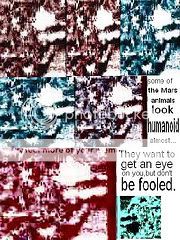 Or here and see faces.
Or here and see faces.

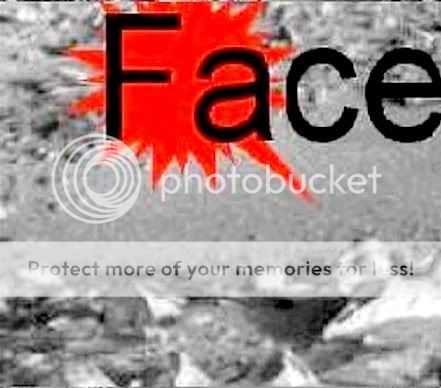

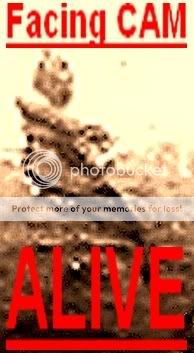 adkchamp I have to tell you there are people on Mars
who look like us and wear clothes and hats. The animals are very diverse and will gather in groups around both rovers of 100 different species.
That's visitors for 4 solid years. Yes Mars has gravity like Earth,but since Mars is smaller the gravity is much less,so that on Mars you'd feel
like you were about 1/3 to 1/2 of your Earth weight.That sounds like fun until you realize the majority of Mars is covered with bothersome rocks
everywhere. Just walking around avoiding tripping over rocks could be a real problem in some areas. The Viking missions definitely discovered
life,because likewise the animals gathered around them too as curiosities.Who is to say the Vikings may still attract onlookers 32 years later. I'm
100% not joking.
adkchamp I have to tell you there are people on Mars
who look like us and wear clothes and hats. The animals are very diverse and will gather in groups around both rovers of 100 different species.
That's visitors for 4 solid years. Yes Mars has gravity like Earth,but since Mars is smaller the gravity is much less,so that on Mars you'd feel
like you were about 1/3 to 1/2 of your Earth weight.That sounds like fun until you realize the majority of Mars is covered with bothersome rocks
everywhere. Just walking around avoiding tripping over rocks could be a real problem in some areas. The Viking missions definitely discovered
life,because likewise the animals gathered around them too as curiosities.Who is to say the Vikings may still attract onlookers 32 years later. I'm
100% not joking.






vze2xjjk ,
Please try to avoid posts of redundant images.
Mod Note: Terms & Conditions Of Use – Please Review This Link.
Your cooperation is appreciated.
Please try to avoid posts of redundant images.
1h.) Spamming: You will not post identical content, or snippets of identical content, to multiple threads in the discussion forums. You will also not create more than one thread for your topic, or create multiple "slightly different" threads for a single topic.
Mod Note: Terms & Conditions Of Use – Please Review This Link.
Your cooperation is appreciated.
Mario Crocco also calculated a minimum 90 cubic microns of LIQUID water per every cubic centimeter of dirty water ice. Such ice resembles the ice
later discovered by the Phoenix mission near the Martian North pole.
This figure (90 cubic microns of liquid water per cubic centimeter of dirty ice at 100 centigrade degrees below the water's freezing point) is a minimum, because Crocco considered in his calculations a mixture of 75% water ice plus 25% dust/sand grains, knowing that the later proportion in the mixture is the minimum to produce sticky materials such as the one ibservationally revealed by the rover's march (and later by the Phoenix's probes).
At an average radius of 27 microns, Crocco found that the grain-ice interface holds a 100-Angstrom thick film of liquid water in the mid section of the interface, which on the volume of one cubic centimeter of dirty ice makes the mentioned 90 cubic microns of LIQUID water. Crocco was familiar with this kind of calculations because part of his neurobiological work studies the comparably slender interstice between brain's cells and the physical state of water (absorbed, structured, ordered) in it, at 37 ºC temperature.
What is still more interesting, is that the mechanism producing the dust grain-ice interfacial liquid film is the action of the van der Waals forces. Thus the interfacial liquid film is permanent. As soon as Gillevinia straata uses up a part of it, this part becomes replaced by substituting liquid coming from the van der Waals action in the interface, even if the microrganism (a jakobia, not a bacteria; bacterial are a terrestrial taxon) metabolizes at temperatures far below the water's freezing point.
This figure (90 cubic microns of liquid water per cubic centimeter of dirty ice at 100 centigrade degrees below the water's freezing point) is a minimum, because Crocco considered in his calculations a mixture of 75% water ice plus 25% dust/sand grains, knowing that the later proportion in the mixture is the minimum to produce sticky materials such as the one ibservationally revealed by the rover's march (and later by the Phoenix's probes).
At an average radius of 27 microns, Crocco found that the grain-ice interface holds a 100-Angstrom thick film of liquid water in the mid section of the interface, which on the volume of one cubic centimeter of dirty ice makes the mentioned 90 cubic microns of LIQUID water. Crocco was familiar with this kind of calculations because part of his neurobiological work studies the comparably slender interstice between brain's cells and the physical state of water (absorbed, structured, ordered) in it, at 37 ºC temperature.
What is still more interesting, is that the mechanism producing the dust grain-ice interfacial liquid film is the action of the van der Waals forces. Thus the interfacial liquid film is permanent. As soon as Gillevinia straata uses up a part of it, this part becomes replaced by substituting liquid coming from the van der Waals action in the interface, even if the microrganism (a jakobia, not a bacteria; bacterial are a terrestrial taxon) metabolizes at temperatures far below the water's freezing point.
www.abidemiracles.com... I'm tinkering with images from Emily Cragg who has a site with a Mars page. I'm taking negative versions
of her finds with the clue that if she finds faces in positive,then some in negative may be within the same frame,less effected by masking.
Jbird I realize my spamming of similar images is a violation and considered banable.I was banned for about 2 weeks because the person who banned me
forgot about me and just never got around to unbanning after a week of no responses.That was simply for multiple posts.ATS banned John Lear.
Compared to me John Lear is obviously a genius with valuable contributions. All the images you've seen from Mars rovers are
partly because of my contribution to JPL Nasa in one submission 1987 when I designed the rovers.I was never hired by them,so I'm not within their
NON-DISCLOSURE draconian policy.That makes me a rare bird.I'm not "MEDIA HOT" and prefer the underground.
Let's just say John Lear died tomorrow,still banned from ATS....what a loss to all of us.

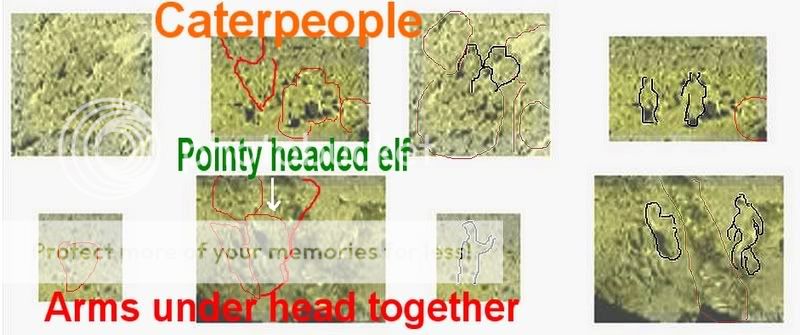 I'm guilty of blowing my own horn,but I also named the
current Mars orbiters 1987 since I came up with the basic config of the swept wing solar panels 1987 and the main thrust of each mission in 2 year
intervals,the main advance being better control using aerobraking for orbital insertion /bouncing off the upper atmosphere for a more perfectly
controlled orbit. The masking by nasa is a perversion of my imaging system described to them on paper 1987.The long term purpose of the orbiters was
my idea for a communications net for future manned misions to Mars as yet unrealized and I believe purposely STALLED.When the veil of ignorance is
lifted,then we will really KNOW MARS.
I'm guilty of blowing my own horn,but I also named the
current Mars orbiters 1987 since I came up with the basic config of the swept wing solar panels 1987 and the main thrust of each mission in 2 year
intervals,the main advance being better control using aerobraking for orbital insertion /bouncing off the upper atmosphere for a more perfectly
controlled orbit. The masking by nasa is a perversion of my imaging system described to them on paper 1987.The long term purpose of the orbiters was
my idea for a communications net for future manned misions to Mars as yet unrealized and I believe purposely STALLED.When the veil of ignorance is
lifted,then we will really KNOW MARS.
[edit on 3-8-2008 by vze2xjjk]


[edit on 3-8-2008 by vze2xjjk]
reply to post by vze2xjjk
I wrote a somewhat large post answering all you said, but after re-reading it I thought it better to delete all and start again, it was not as polite as it should have been.
As I have said before, I like some of your imageless posts, but even those are sometimes plagued by the "I designed everything" disease.
You may have designed the rovers, orbiters, Colombo's ships, everything, but without anything to back you up it means nothing and makes you look like one of two things:
1 - a lier
2 - someone who seeks attention and tries to get it by creating an alternative life
I know that it is possible for people that are not known to make important things at NASA, I had a neighbour that was like that, although he was only a automobile mechanic he suggested many of his ideas to NASA and many were used, and he was invited by NASA in many occasions.
Sorry everybody for this off-topic post, but I had to say something about it.
I wrote a somewhat large post answering all you said, but after re-reading it I thought it better to delete all and start again, it was not as polite as it should have been.
As I have said before, I like some of your imageless posts, but even those are sometimes plagued by the "I designed everything" disease.
You may have designed the rovers, orbiters, Colombo's ships, everything, but without anything to back you up it means nothing and makes you look like one of two things:
1 - a lier
2 - someone who seeks attention and tries to get it by creating an alternative life
I know that it is possible for people that are not known to make important things at NASA, I had a neighbour that was like that, although he was only a automobile mechanic he suggested many of his ideas to NASA and many were used, and he was invited by NASA in many occasions.
Sorry everybody for this off-topic post, but I had to say something about it.
Yeah I'm like your friend the mechanic,an outsider with ideas that give people jobs and make a billion dollars worth of Nasa missions. All that
doesn't matter in the long run if nasa is covering up life on Mars for decades(32 years actually). Many would prefer polite people who conform like
the Nazis,and wait for the book burnings to warm our hands.Destroying information in the case of bad science is irresponsible and reprehensible.Armap,
you at least respond and search in your own way. 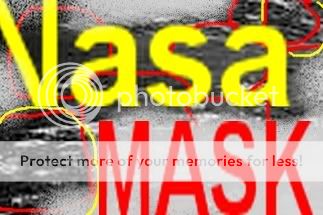 Eyes ,nose ,mouth.
Eyes ,nose ,mouth.

reply to post by vze2xjjk
Just two corrections.
1 - He was not my friend, it was just my neighbour.
2 - You are not like him in the sense he did not told everybody what he had done, he did it and he just let other people tell the world what he had done if they found it worth it.
Just two corrections.
1 - He was not my friend, it was just my neighbour.
2 - You are not like him in the sense he did not told everybody what he had done, he did it and he just let other people tell the world what he had done if they found it worth it.
new topics
-
Outgoing Lame Duck BIDEN Officials and Democrats Voice Their Regrets.
2024 Elections: 4 hours ago -
Reflections of Elections past
US Political Madness: 6 hours ago -
President Carter has passed
Mainstream News: 8 hours ago -
Get Reday - Here comes the Bird Flu Pandemic - Millions are Notified
Diseases and Pandemics: 8 hours ago -
2 Guys die hunting Bigfoot
Cryptozoology: 9 hours ago -
Joe Rogan and The Black Keys Diorama
General Entertainment: 11 hours ago
top topics
-
Get Reday - Here comes the Bird Flu Pandemic - Millions are Notified
Diseases and Pandemics: 8 hours ago, 16 flags -
President Carter has passed
Mainstream News: 8 hours ago, 15 flags -
2 Guys die hunting Bigfoot
Cryptozoology: 9 hours ago, 6 flags -
Outgoing Lame Duck BIDEN Officials and Democrats Voice Their Regrets.
2024 Elections: 4 hours ago, 6 flags -
Reflections of Elections past
US Political Madness: 6 hours ago, 5 flags -
Joe Rogan and The Black Keys Diorama
General Entertainment: 11 hours ago, 3 flags
active topics
-
Get Reday - Here comes the Bird Flu Pandemic - Millions are Notified
Diseases and Pandemics • 21 • : FullHeathen -
My personal experiences and understanding of orbs
Aliens and UFOs • 32 • : Compendium -
President Carter has passed
Mainstream News • 13 • : WeMustCare -
Joe Rogan and The Black Keys Diorama
General Entertainment • 6 • : GENERAL EYES -
Outgoing Lame Duck BIDEN Officials and Democrats Voice Their Regrets.
2024 Elections • 6 • : WeMustCare -
Treasury Secretary Janet Yellen Says The USA Will Be in Debt Default in Jan 2025 - Unless...
Mainstream News • 35 • : cherokeetroy -
-@TH3WH17ERABB17- -Q- ---TIME TO SHOW THE WORLD--- -Part- --44--
Dissecting Disinformation • 3846 • : 777Vader -
Why Such An Uproar Over Non-US Citizens With H1-B Work Visas.
Social Issues and Civil Unrest • 79 • : cherokeetroy -
This is why ALL illegals who live in the US must go
Social Issues and Civil Unrest • 35 • : charlyv -
2 Guys die hunting Bigfoot
Cryptozoology • 15 • : Lumenari
5
